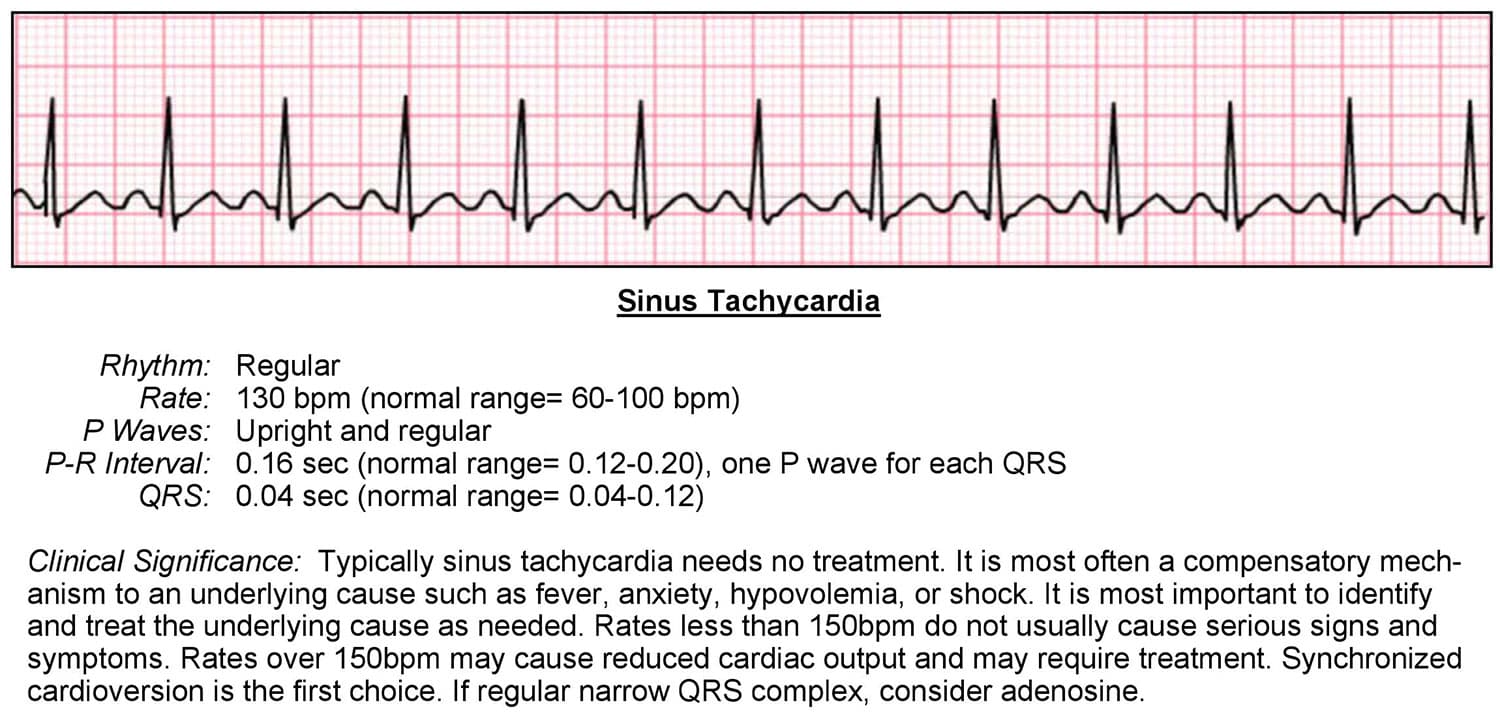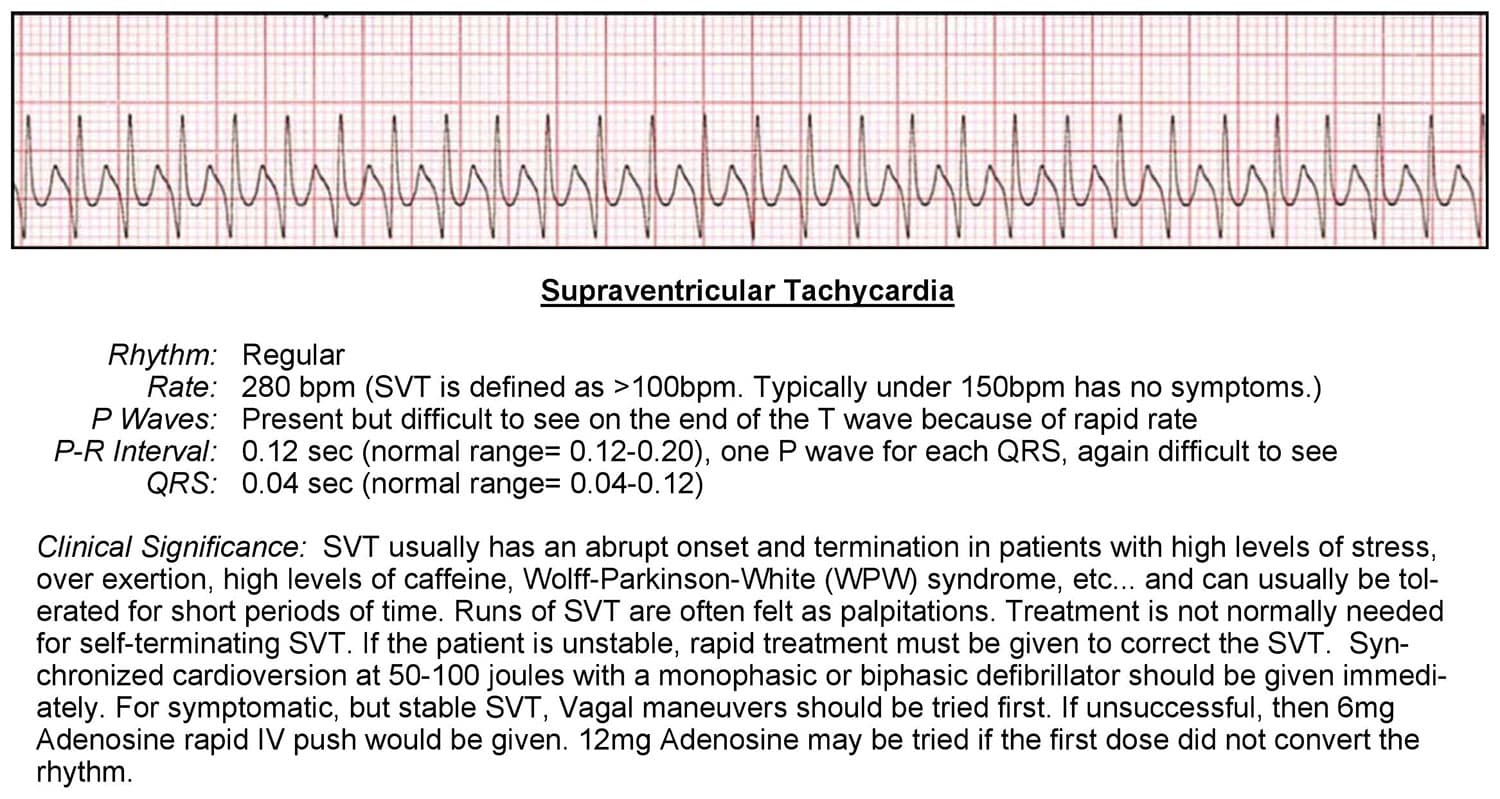Tachycardia is an abnormally fast heart rate.
There are a couple different definitions of tachycardia:
- Narrow complex
- Less than .12 seconds in length
- Wide complex.
- Greater than .12 seconds in length
These differentiations are significant, because they’re measurable and can tell us if the cause of the arrhythmia is atrial based or ventricular based. Tachycardia that originates above the ventricles is called supraventricular tachycardia (SVT). As a result, the heart may beat inefficiently, and the body may receive an inadequate blood supply.
If the heart rate is too fast for the condition of the patient and the heart, the result is usually:
- Decrease in cardiac output
- Poor perfusion of oxygenated blood
- Decrease in blood pressure

An ECG for a narrow complex sinus tachycardia will show the following:
- Rhythm is regular
- Rate is greater than 100 beats per minute
- P waves are present and upright
- PR interval is .12 – .20 seconds
- The QRS complex is .06 -.11
- P wave to QRS ratio is 1:1
Significance:
The leading causes of most tachycardias are:
- Heart disease
- Electrolyte imbalance
- Medications
- Hypoxemia
If the patient is unstable, rapid treatment must be given to correct the cause of the tachycardia. Narrow complex tachycardias are less likely to cause life-threatening hemodynamic instability. In some cases, they can be a normal response to the body needing better circulation, because of fear, exercise, or moderate bleeding resulting in blood volume issues.
